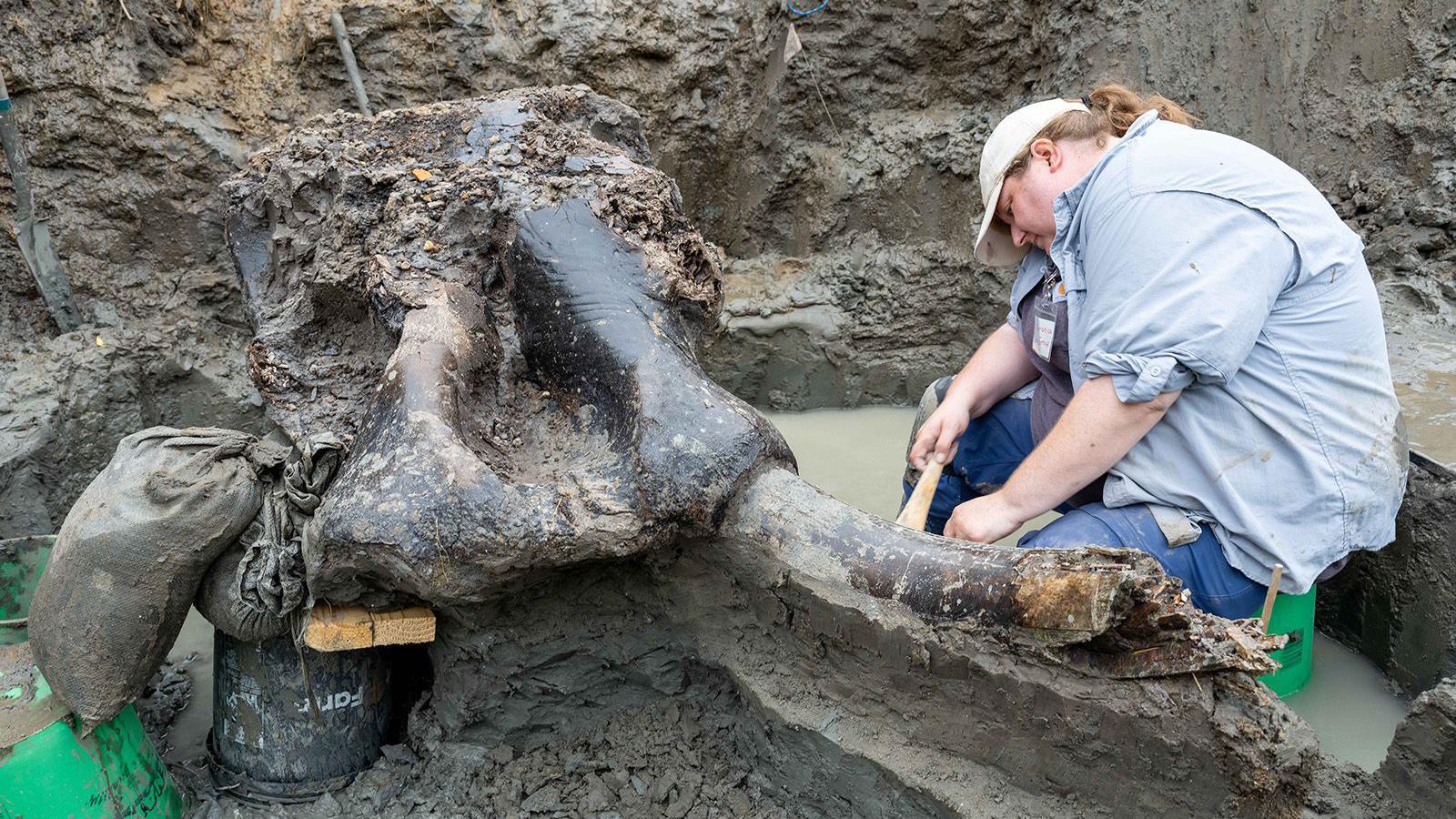Ancient mastodon skull discovered in the US

University of Iowa archaeologist Veronica Mraz excavating the mastodon skull
- Published
The discovery of a tusked fossil in the US state of Iowa, could give experts more clues to how the ancient mastodons became extinct.
Archaeologists from the University of Iowa uncovered the well-preserved mastodon skull after a resident found an oversized leg sticking out of the mud in 2022 and reported it to the Office of the State Archaeologist.
A mastodon is an ancient beast similar to a mammoth and related to the elephant.
It took 12 days for archaeologists and local enthusiasts to carefully unearth several skull bones.
Using radiocarbon dating, the skull was found to be 13,600 years old, which matches the time when the first humans lived and hunted in the area.
It is the first ever mastodon skull in that area and its discovery could mean there are potentially more there.
What is a mastodon?

An illustration of a mastodon
Historians say mastodons lived across the Earth, but only fossils found in North America have been strictly identified.
Mastodons are related to the modern day elephant and now-extinct mammoths.
They went extinct relatively recently in the history of life on Earth - around 13,000 years ago.
Mastodons were shorter and stockier than mammoths. Both had long upper tusks.
Their skulls were flatter than modern elephants and they also had smaller ears.
Diver discovers massive ancient tusk off coast of Florida
- Published7 June 2024
'Sudden event' could have caused the woolly mammoth to be wiped out
- Published28 June 2024
Could woolly mammoths come back from extinction?
- Published15 September 2021
The archaeologists on the dig also found human-made artefacts like stone tools which even though they were dated a few thousands years after the skull, showed humans lived in the same area.
John Doershuk, director and state archaeologist at the University of Iowa Office of the State Archaeologist (OSA), said they were hoping to find more links between humans and mastodons.
“We’re really hoping to find evidence of human interaction with this creature — perhaps the projectile points and knives that were used to kill the animal,” Doershuk says.
“There’s also potential evidence on the bones themselves — there could be identifiable cut marks.”
Experts will now do further analysis and research to find out exactly what happened to the mastodon and how it ended up in the creek.
